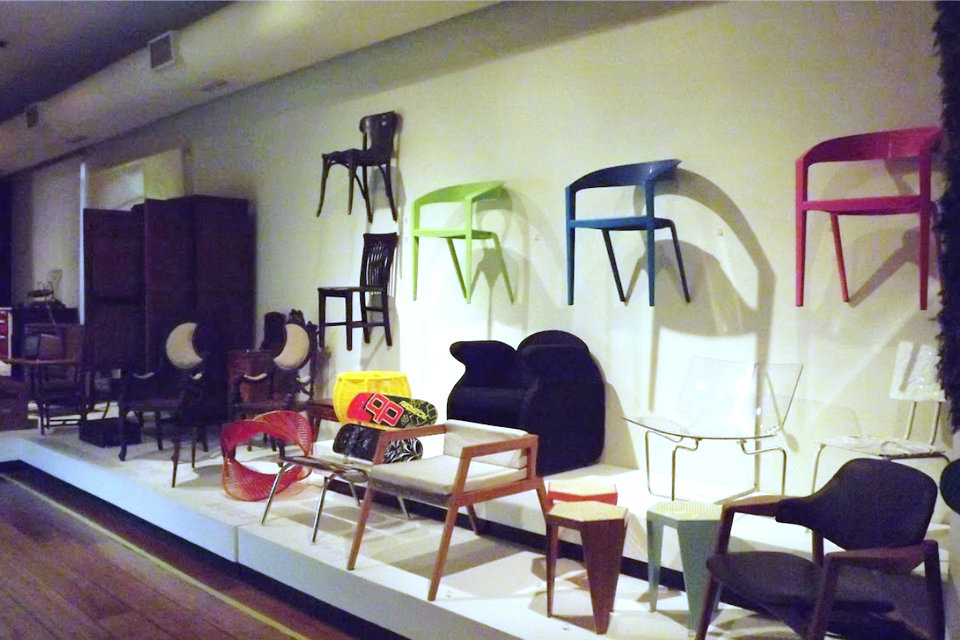Citizenship under Construction, 1889 to present, National History Museum of Brazil


This section addresses the construction of citizenship after the establishment of the republican system in 1889. Being a citizen means belonging to a community, exercising political, civil and social rights and duties, recognizing the distinction between public and private interests.
On display, the synthesis panel of the history of Brazil, by Clécio Penedo and the triptych A República , by Helios Seelinger; the 1891 Constituent table; pictures of Tiradentes; ballot boxes, voter cards and ballot papers, among other documents; uniforms and work instruments, objects related to education, health, housing, sports and leisure. Videos with images from the 20th century permeate the entire exhibition.
A new Brazil
The National Historical Museum houses the long-standing exhibition “Citizenship in Construction – 1889 to the present”, which presents the republican system established since 1889, addressing political, civil and social rights. The exhibition aims to reflect on the process of building citizenship, through photos, panels, clothes, historical documents and videos that tell curiosities and events from 1889 to the present day.
The country evolves and the citizen conquers his space. The museum preserves the past, lives the present and reaffirms the Brazilian identity, comprehensive and diverse from classical to contemporary, a range of furniture is displayed in the National History Museum’s collection
A panel synthesizes the history of Brazil, by Clécio Penedo and the triptych A República, by Helios Seelinger; the 1891 Constituent table; pictures of Tiradentes; ballot boxes, voter cards and ballot papers, among other documents; uniforms and work instruments, objects related to education, health, housing, sports and leisure. Videos with images from the 20th century permeate the entire exhibition.
From the cave to the 21st century
The Exhibition Circuit starts on the ground floor, in the escalator hall, with panels telling the story of the architectural ensemble. Highlight for the equestrian sculpture of D. Pedro II, by Francisco Manoel Chaves Pinheiro. In the hall on the second floor, there is access to the gallery with a ceiling decorated by Carlos Oswald, where the multivision is projected on the trajectory of the National Historical Museum. After the exhibition, exhibitions present the history of Brazil: traditional collection, contemporary pieces and multimedia resources help the visitor to understand the history.
National History Museum of Brazil
The National Historical Museum of Brazil was created in 1922, and possesses over 287,000 items, including the largest numismatic collection of Latin America. The architectural complex that houses the museum was built in 1603 as the St. James of Mercy Fort; earlier structures date back to 1567, erected by order of King Sebastian I of Portugal. In 1693, the Calaboose Prison, for slaves, was built. In 1762, the Casa do Trem was added as a depot of weapons and ammunition. The last additions are the War Arsenal (1764) and the Barracks (1835).
The formation of the collection of the National Historical Museum began with the transfer of items from other institutions that already existed at the time of its foundation. Several items and pieces came from the National Archives museum and from the National Library’s numismatics office. The Casa da Moeda, the National Museum of Fine Arts, the Ministry of the Army and the Ministry of the Navy also contributed to the initial formation of the collection.
Currently, the National Historical Museum occupies the entire architectural complex of Ponta do Calabouço and became the most important museum of history in the country, bringing together a collection of 258,000 items, including objects, documents and books, and being an institution of production and dissemination of knowledge.
National Historical Museum maintains long-term and temporary exhibition galleries in a 9,000 m² area open to the public, as well as a library specialized in Brazil History, Art History, Museology and Fashion, and the Historical Archive with important manuscript documents, watercolors, illustrations and photographs, including Juan Gutierrez, Augusto Malta and Marc Ferrez.
It also maintains programs to students, teachers, senior citizens and poor communities. Its storage rooms, conservation and restoration laboratories and numismatics (collection of coins and other printed figures) can be consulted by prior appointment. Picturesque inner courtyards and a friendly cafeteria offer pleasant options for relaxing moments.